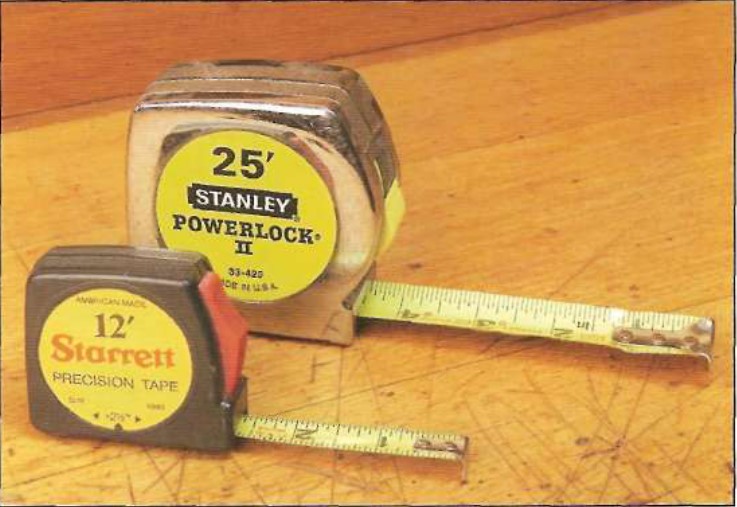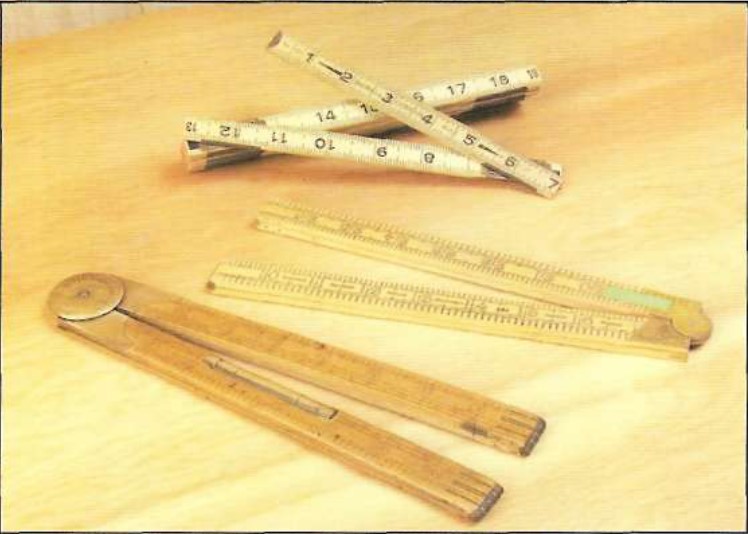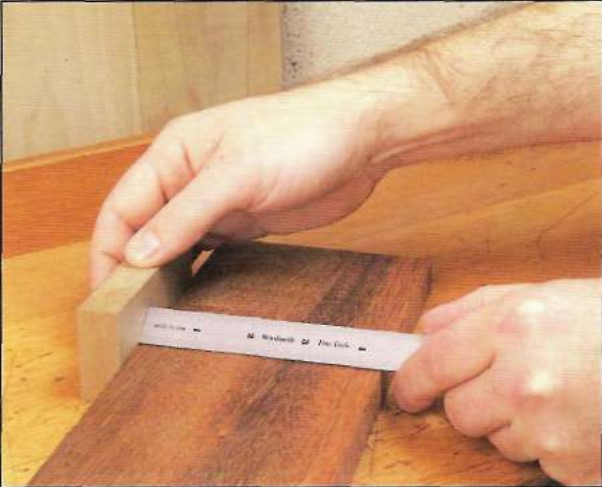I’m sure that when Alvin J. Fellows patented the steel tape measure in 1868, he didn’t expect that his invention would turn out to be one of the most useful of all tools to the woodworker. Although his tape measure didn’t have a locking mechanism for the tape (this was patented by Stanley in 1968),…
FOLDING RULES
Long before the tape measure arrived, the folding rule was used for layout and measuring. Typically made of boxwood with brass protecting the ends, the most common of these was the four-fold 2-foot rule that fit easily in a pocket. A more modern type of folding rule is the zigzag rule. Although I usually use…
LAYOUT TIPS
Block of wood A common cause of inaccuracy when using a metal rule is in measuring in from the edge of a work-piece. The problem is positioning the rule so that it’s absolutely flush with the edge. Many woodworkers use their finger as a stop and press the rule into their finger. Good idea, but…
MARKING TOOLS
If you were to ask most woodworkers what the foundation of accuracy is, they’d likely say the ruler, the tape measure, or the square. But I’ve always felt it’s the marking tools you choose. Granted, the rule, tape measure, and square are essential to precision; but without a clean, crisp marking tool, all their accuracy…




